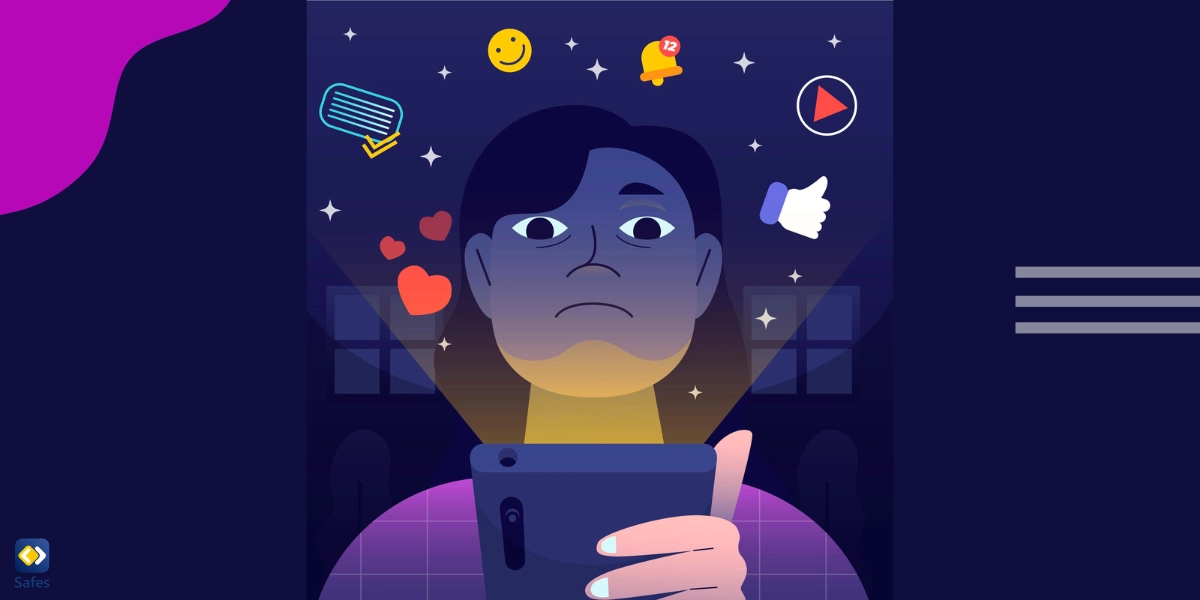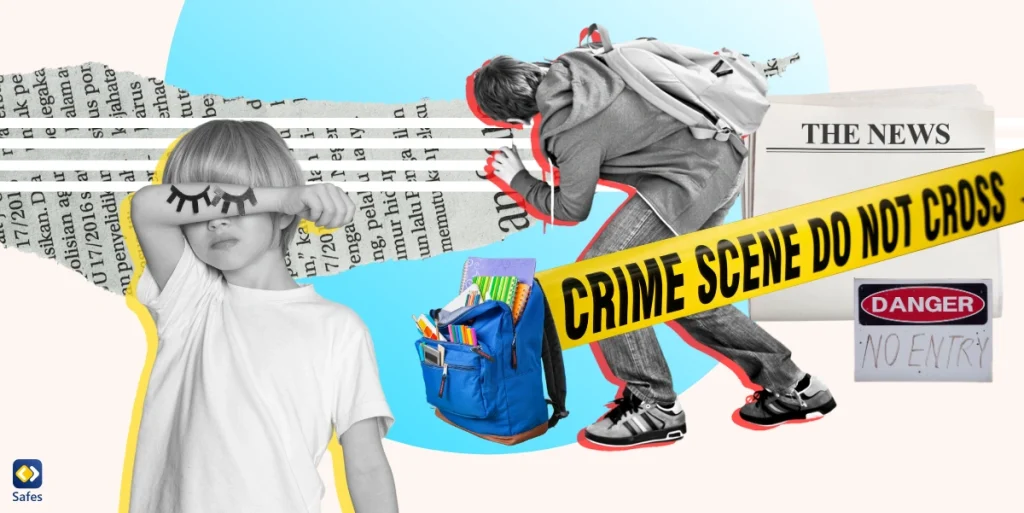Social media is now where we keep in touch with friends and family and keep current with the news. This is especially true for the younger generations. Platforms like Instagram, Facebook, and Snapchat offer a window into the lives of others, showcasing their best moments, achievements, and appearances. But this curated online world can create a distorted reality affecting our children’s perceptions of themselves and others. In this article, we will explore the impact of social media on children’s perceptions and discuss how you can mitigate their adverse effects on your child.
Download and Start Your Free Trial of the Safes Parental Control App
The Mechanics of Distortion: How Social Media Algorithms Shape Our Perception
Behind the vibrant facade of likes, shares, and retweets lies a complex web of social media algorithms that lead to a distorted perception. These algorithms, like those on Instagram, Facebook, and other platforms, analyze our online behavior to deliver a customized experience. They have the power to amplify certain narratives while quietening others, influencing the trends, ideologies, and movements we encounter.
According to a study published in The Journal of High Technology Law at Suffolk University Law School, social media algorithms can be dangerous for promoting harmful and misleading information. Platforms often utilize these algorithms to optimize engagement, perpetuating echo chambers and polarizing societies. This optimization for engagement erodes critical thinking, compromises user privacy, and distorts our perception of reality.
The Psychological Impact: How Social Media Affects Our Perception
Social media exerts a deep influence on our self-perception, particularly among adolescents. The constant exposure to carefully curated highlight reels can lead to feelings of inadequacy, self-doubt, and diminished self-esteem.
A study published in the National Institutes of Health warns of the negative impact of constant exposure to idealized portrayals, fostering unrealistic expectations and persistent dissatisfaction, especially in girls and women.
Adolescents, in particular, are susceptible to the effects of social media. The need for validation, social comparison, and the desire to fit in make them more susceptible to the distorted reality presented on these platforms. The pressure to look perfect and impress peers can be overwhelming, leading to adverse emotional reactions and even mental health issues.

Struggling to Stay Afloat: The Fallout of Unrealistic Standards
The consequences of these unrealistic standards can be even more severe during the transition to college. Students face higher stakes, harder work, and a largely independent environment. The pressure to maintain a perfect image intensifies, and social media becomes a platform for projecting a flawless persona. However, behind the digital curtain, many students may be struggling emotionally.
Researchers at Stanford University have coined the term “duck syndrome” to describe this phenomenon. Students project a perfect image on social media, but behind the scenes, they may struggle to stay emotionally afloat. The gap between the curated online persona and reality can lead to feelings of isolation, anxiety, and depression.
Hiding Imperfection: The Smoke Screen of Social Media
For adolescents experiencing anxiety or depression, social media platforms can act as a smoke screen, masking their actual struggles. By carefully curating their online presence, they hide their imperfections and make it harder for parents and friends to recognize when they need help. This discrepancy between the online persona and the true self can exacerbate feelings of inadequacy and self-judgment.
Dr. Jill Emanuele, Senior Director of the Mood Disorders Center at the Child Mind Institute, emphasizes the importance of promoting authenticity in online interactions. While posting edited pictures or presenting a more glamorous life is not inherently problematic, it can contribute to a difficult situation. Adolescents who have created idealized online personas may feel frustrated and depressed when confronted with the gap between who they pretend to be online and who they truly are.
Other People’s Perfection: The Dangers of Social Comparison
One prevalent problem among teenagers is the negative impact of social comparison on their self-esteem. Adolescents struggling with self-doubt often interpret their friends’ images as confirmation of their own perceived shortcomings. This constant exposure to seemingly perfect lives can lead to feelings of inferiority and envy.
As a parent, you must understand that social media is just a curated version of reality. Encouraging critical thinking and discussing the purpose of posting photos can help adolescents develop a healthier perspective. By exploring the potential gaps between the online image and real life, you can help your child navigate the distorted reality presented on social media.
The Safes Parental Control App: A Valuable Tool for Parents
Parents like you are crucial in guiding children’s online experiences in today’s digital landscape. The Safes parental control app offers a valuable solution to combat the distortion caused by social media. This app provides oversight and allows you to set limits on screen time, ensuring a healthy balance between online and offline activities.
Through features like content filtering, app blocking, and screen time management, Safes empowers you to protect your child from the negative impact of social media. Monitoring and regulating their online interactions can create a safer digital environment and avoid reality distortions.
Safes offers both a limited free plan and a premium paid plan. Feel free to download it on our website or Google Play and App Store to discover the unlimited tools that Safes offers to protect your child online. Also, make sure you read the resources linked below to find out about how to put parental controls on different platforms using Safes:
- Windows parental controls
- Macbook parental controls
- Parental controls on Android
- iPhone parental controls
Start your free trial today and explore Safes’ comprehensive parental control features.
Conclusion: The Distorted Reality of Social Media
Social media has undeniably shaped our perception of reality, especially among young people because they’re the primary social media users. The distorted reality on these platforms can strongly impact children’s self-esteem, mental health, and overall well-being.
You can, however, guide your child through the distorted world of social media by promoting authenticity, critical thinking, and healthy online habits. The Safes parental control app offers a valuable tool to monitor and regulate online activities, providing oversight and setting limits to protect your child from the harmful effects of being distorted from reality.
Through continuous research and the development of educational programs, you can empower your child to navigate the digital landscape responsibly and build a healthier perception of themselves and others.
Your Child’s Online Safety Starts Here
Every parent today needs a solution to manage screen time and keep their child safe online.
Without the right tools, digital risks and excessive screen time can impact children's well-being. Safes helps parents set healthy boundaries, monitor activity, and protect kids from online dangers—all with an easy-to-use app.
Take control of your child’s digital world. Learn more about Safes or download the app to start your free trial today!




